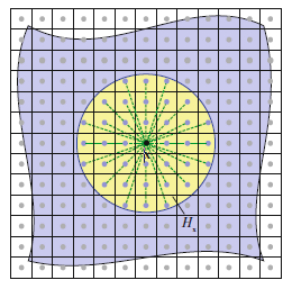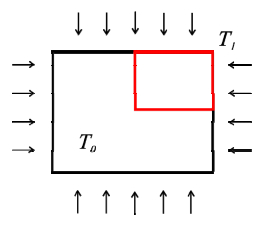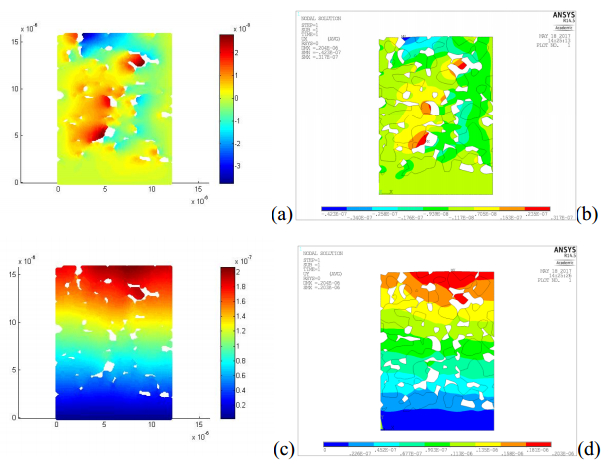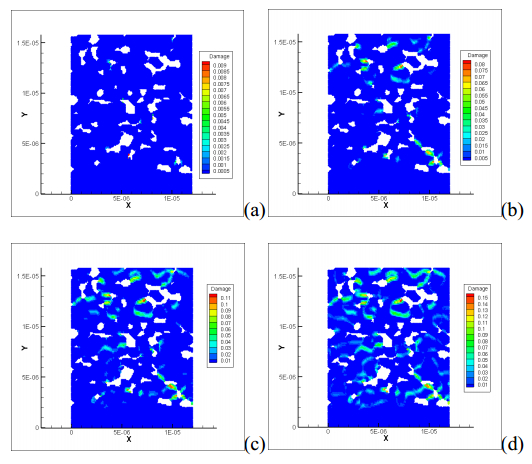A correction on
Comparison of school day eating behaviours of 8-11 year old children from Adelaide, South Australia, and London, England
Running title: Child eating behaviours in South Australia and England
by Dorota Zarnowiecki, Meaghan S Christian, James Dollman, Natalie Parletta, Charlotte E.L Evans, Janet E Cade. AIMS Public Health , 2018, 5(4): 394-410. doi: 10.3934/publichealth.2018.4.394
We would like to submit the following corrections to our recently published paper [1] due to the wrong version of the manuscript. The details are the following.
1. The first paragraph in section 1 has been updated.
“The impact of poor nutrition in children is causing public health concerns around the world, and contributing to rising childhood obesity [1,2]. Diet plays a fundamental role in weight management, and it is vital to foster healthy dietary behaviours from a young age to establish long term healthy habits [1,3,4]. Recently Evans et al have explored how the policies around health promotion and provision of food during the school day are having a considerable impact on overall diet intake in children [5]. Two countries with considerably different school food provision practices are Australia and England. England school food provision is centred on the school providing a school meal, whereas in Australia, most children bring in their own meal prepared by their parents, a “packed lunch” [6]. Only one other study has considered how differing food provision practices affect children's overall nutritional intake in England and Australia [7]. This review highlighted considerable differences in school nutrition policies between Australian and England, noting potential nutritional advantages of school meal provision for improving diet quality in children. However, understanding of the potential impact of school nutrition policies for improving nutritional intake is limited by a lack of monitoring and evaluation of policy compliance and dietary intake. Another important finding was whilst during school hours children's food consumption is restricted to meet nutrition standards it is the home food environment that can have a lasting impact on overall diet quality [7].”
2. The table 1 has been updated.
Table 1. Demographics by Country.
|
Australia (n = 347) |
England (n = 425) |
| Child Characteristics |
|
|
| Age (years; mean ± SD) |
10.6 ± 0.5 |
9.7 ± 0.6 |
| Boys [n (%)] |
194 (56) |
204 (48) |
| Ethnicity [n (%)] |
|
|
| White |
313 (90) |
74 (17) |
| Mixed |
2 (0.5) |
47 (11) |
| Asian |
26 (8) |
42(10) |
| Black |
6 (1.5) |
85 (20) |
| Missing# |
- |
177 (42) |
| Parent Education [n (%)] |
|
|
| High school or less |
97 (28) |
47 (24) |
| Trade or diploma |
111 (32) |
43 (22) |
| University degree or higher |
139 (40) |
104 (53) |
| Missing ˆ |
- |
231* |
| Meal type [n (%)] |
|
|
| Packed lunch |
305 (90) |
135 (33) |
| School meal |
34 (10) |
273 (67) |
| Consumed breakfast |
275 (79) |
396 (93) |
| Family Meal [n (%)] |
|
|
| Less than once a week |
30 (9) |
129 (30) |
| 1-6 times a week |
83 (24) |
152 (36) |
| Every day |
234 (68) |
144 (34) |
| Fruit serves per day [n (%)] |
|
|
| Less than 1 per day |
42 (12) |
105 (25) |
| 1-2 serves per day |
161 (46) |
129 (30) |
| 3-5 serves per day |
102 (30) |
126 (30) |
| More than 5 serves per day |
42 (12) |
65 (15) |
| Vegetable serves per day [n (%)] |
|
|
| Less than 1 per day |
8 (2) |
72 (17) |
| 1-2 serves per day |
38 (11) |
77 (18) |
| 3-5 serves per day |
158 (46) |
161 (37) |
| More than 5 serves per day |
143 (41) |
115 (27) |
# Ethnicity data missing for 42 % of English participants (n = 177); percent distribution of ethnicity presented in table includes participants with missing data. Distribution of ethnicity without including missing data: White 30%, Mixed 19.0%, Asian 17%, Black 34%.
ˆ Education data missing for 54% English participants (n = 231); percent distribution of education presented in table only includes those who provided us with details.
- Means no missing data |
3. The second paragraph in section 3 has been updated.
“There were considerable differences between foods and drinks consumed by Australian and English children during the school day (Table 2). The proportion of children from Australia consuming any food at recess was 77.8% (95% CI 73.4, 82.1) whereas for the English children it was less than half at only 45% (95%CI 40.8, 50.3). Australian children reported consuming significantly more water during recess and lunchtime, English children consumed more sweet drinks at lunch, all children consumed some food at lunchtime. Differences were observed in drinks consumed in the afterschool period, with more English children consuming water, milk and flavoured milk, whereas more Australian children consumed sweet drinks. The proportion of children who consumed drinks at either recess, lunch or after school was similar with Australian's consuming significantly more water (89.3% compared to 74.1%), milk/flavoured milk (23.0%. Compared to 15.5%) and fruit juice (38.6% compared to 29.2%), compared to English children, however there was no total difference in sweet drinks. Overall frequency of core foods consumed during the school day was similar, but the times at which foods were consumed differed between Australian and English children. Non-core foods, such as sweet biscuits and cakes, were consumed across all three meal events for Australian children; however, they were only consumed at lunchtime or after school among the English children. The proportion of Australian children who consumed these items at any point during the day was significantly more for potato crisps (52.2% compared to 24.7%), chocolate (27.4% compared to 2.4%), and lollies (18.2% compared to 16.5%), whereas English children consumed more biscuits and cakes (50.8% compared to 40%). Considerably more English children reported consuming vegetables at school than Australian children (recess/lunchtime Australian children 3.4%/6.1%; English children recess/lunchtime, 3.6/51.1%) and significantly more English children consumed vegetables in total for the school day (61.2% compared to 21.9%). For fruit, Australian children consumed more at recess (31.4% compared to 9.7%) whereas English children consumed more at lunchtime (Australian 17.6% compared to 27.2%). There was no significant difference in total number of children consuming fruit across the school day. The most commonly consumed fruit for both countries was an apple, and the most commonly consumed vegetables (not including potato) were carrots by Australian children, and peas and sweetcorn by English children (Table 3).”
4. The table 2 has been updated.
5. One reference has been added.
Rampersaud GC (2009) Benefits of breakfast for children and adolescents: Update and recommendations for practitioners. Am J Lifestyle Medicine 3: 86-103.
Table 2. Consumption number (%) of foods and drinks during the school day at recess, lunch and afterschool (N = 772).
|
Recess |
Lunch |
After school |
Total intake (%)* |
| Aus |
Eng |
p |
AUS |
Eng |
p |
Aus |
Eng |
p |
Aus |
Eng |
p |
| Drinks |
|
|
|
|
|
|
|
|
|
|
|
|
| Water |
226 (65.1) |
32 (7.6) |
<0.001 |
256 (73.8) |
122 (28.7) |
<0.001 |
197 (56.4) |
256 (60.2) |
0.331 |
310 (89.3) |
315 (74.1) |
<0.001 |
| Milk/flavoured milk |
9 (2.6) |
0 (0.0) |
<0.001 |
9 (2.6) |
21 (4.9) |
0.090 |
67 (11.3) |
48 (19.3) |
0.002 |
80 (23.0) |
66 (15.5) |
0.008 |
| Fruit juice |
31 (8.9) |
11 (2.6) |
<0.001 |
25 (7.2) |
38 (8.9) |
0.381 |
99 (28.5) |
87 (20.5) |
0.009 |
134 (38.6) |
124 (29.2) |
0.006 |
| Sweet drinks# |
13 (3.7) |
1 (0.2) |
<0.001 |
14 (4.0) |
51 (12.0) |
<0.001 |
102 (29.4) |
90 (21.2) |
0.009 |
111 (32.0) |
132 (31.1) |
0.770 |
| Core foods |
|
|
|
|
|
|
|
|
|
|
|
|
| Yoghurt |
30 (8.7) |
0 (0.0) |
<0.001 |
9 (2.6) |
118 (27.8) |
<0.001 |
43 (12.4) |
43 (10.1) |
0.318 |
74 (21.3) |
148 (34.8) |
<0.001 |
| Sandwich |
10 (2.9) |
0 (0.0) |
<0.001 |
228 (65.7) |
189 (44.5) |
<0.001 |
42 (12.1) |
99 (23.3) |
<0.001 |
246 (70.8) |
242 (56.9) |
<0.001 |
| Vegetables |
13 (3.8) |
0 (0.0) |
<0.001 |
21 (6.1) |
217 (51.1) |
<0.001 |
56 (16.1) |
68 (16.0) |
0.958 |
76 (21.9) |
260 (61.2) |
<0.001 |
| Fruit |
109 (31.4) |
41 (9.7) |
<0.001 |
61 (17.6) |
117 (27.5) |
0.001 |
86 (24.8) |
150 (35.3) |
0.002 |
180 (51.9) |
249 (58.6) |
0.062 |
| Dried fruit |
9 (2.6) |
3 (0.7) |
0.035 |
2 (0.6) |
0 (0.0) |
0.117 |
11 (3.2) |
4 (0.9) |
0.026 |
15 (3.5) |
15 (3.5) |
0.780 |
| Soup |
2 (0.6) |
0 (0.0) |
- |
5 (1.4) |
0 (0.0) |
- |
18 (5.2) |
0 (0.0) |
- |
21 (6.1) |
0 (0.0) |
- |
| Pasta/noodles |
2 (0.6) |
0 (0.0) |
0.117 |
19 (5.5) |
134 (31.5) |
<0.001 |
40 (11.5) |
45 (10.6) |
0.678 |
60 (17.3) |
164 (38.6) |
<0.001 |
| Non-core foods |
|
|
|
|
|
|
|
|
|
|
|
|
| Hot chips/fries/wedges |
3 (0.8) |
0 (0.0) |
0.055 |
6 (1.7) |
68 (16.0) |
<0.001 |
17 (4.9) |
21 (5.1) |
0.885 |
24 (6.9) |
82 (20.1) |
<0.001 |
| Pizza |
0 (0.0) |
0 (0.0) |
- |
8 (2.3) |
1 (0.2) |
0.008 |
14 (4.0) |
13 (3.1) |
0.463 |
22 (6.3) |
14 (4.0) |
0.724 |
| Pies/pasties/sausage roll/hot dog |
2 (0.6) |
0 (0.0) |
0.117 |
12 (3.5) |
28 (6.6) |
0.051 |
22 (6.3) |
16 (3.8) |
<0.001 |
34 (9.8) |
44 (10.4) |
0.799 |
| Potato crisps |
151 (43.5) |
0 (0.0) |
<0.001 |
16 (3.4) |
48 (11.1) |
0.001 |
182 (52.5) |
57 (16.4) |
0.001 |
182 (52.4) |
105 (24.7) |
<0.001 |
| Savoury biscuits/crackers |
43 (12.4) |
0 (0.0) |
<0.001 |
19 (5.5) |
52 (12.2) |
0.001 |
43 (12.4) |
72 (16.9) |
0.077 |
87 (25.1) |
113 (26.6) |
0.632 |
| Chocolates |
61 (17.6) |
0 (0.0) |
<0.001 |
12 (3.5) |
10 (2.4) |
0.359 |
38 (11.0) |
0 (0.0) |
<0.001 |
95 (27.4) |
10 (2.4) |
<0.001 |
| Lollies |
25 (7.2) |
0 (0.0) |
<0.001 |
12 (3.5) |
3 (0.7) |
0.006 |
42 (12.1) |
67 (15.8) |
0.146 |
63 (18.2) |
70 (16.5) |
<0.001 |
| Muesli bar |
95 (27.4) |
16 (3.8) |
<0.001 |
25 (7.2) |
21 (4.9) |
0.186 |
28 (8.1) |
18 (4.2) |
0.025 |
131 (37.8) |
52 (12.2) |
0.537 |
| Sweet biscuits/cakes/muffins |
92 (26.5) |
0 (0.0) |
<0.001 |
14 (4.0) |
113 (26.6) |
<0.001 |
55 (15.9) |
139 (32.7) |
<0.001 |
136 (40.0) |
216 (50.8) |
0.001 |
| Ice-cream |
8 (2.3) |
0 (0.0) |
- |
7 (2.0) |
31 (7.3) |
0.001 |
45 (13.0) |
10 (2.4) |
<0.001 |
55 (15.9) |
41 (9.6) |
0.549 |
| # Sweet drinks including soft drinks, cordial, energy drinks and soft drinks; *total intake of each item was only counted once per child. (p < 0.05) between Australian and English children. |









 DownLoad:
DownLoad: 












